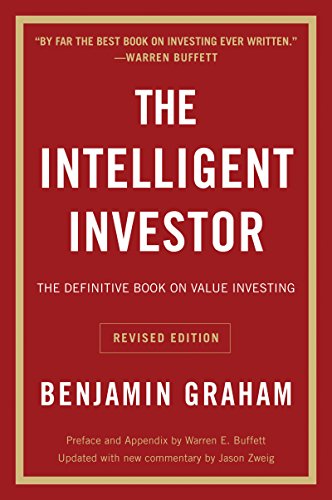Your 20s are one of the most valuable periods in your life, not just because you’re settled into your first real job, you’re eyeing that nice apartment you hope to live in, your health is probably better than ever, and your group of friends is thriving. It’s time to start thinking about building your wealth. And the best way to do it? Investment.
If you’re dipping your toe in the investment world, it’s best to start with investments that have a minimum risk. We have gathered our top picks for you!
Today, our topic is best low-risk investments for young adults in their 20s. Let’s get started!

The intelligent investor
by Benjamin graham
⏱ 14 minutes reading time
🎧 Audio version available
First up, let’s talk about compounding interest. Compounding interest is fancy investor talk for “interest that is earned on the interest you previously accumulated over an increased amount of time.”
Why do we need to learn about compounding interest? Only because it’s a serious weapon in your arsenal when it comes to not just earning money, but building wealth.
Let us give you a tempting example of how compounding interest can benefit you, if you wield it correctly. The scenario goes like this: you just turned, let’s say, 25 years old. And every year, you save a little from every paycheck and bonus check until you invest a total of $5,000. You stop investing by the time you turn 35. This is an entire decade we’re talking about.
Assuming that there is an interest rate of 7%, after a decade of investing, you’ll have a mind-blowing $602,070 by the time you retire.
This only goes for people who are smart enough to save up in their 20s. If someone didn’t start saving up until they reached the 35 threshold– and they’re saving the same $50,000– they won’t benefit as much. Even if this person saves from 35 all the way to 65. The one who started saving in their 20s will have three times the amount the other did. So the earlier you invest, the more you can take advantage of compounding interest.
Invest in Stocks– Or Fractional Shares
These days, there is no need to buy full stocks. So, if you want to invest in stocks, but can’t afford to invest too deeply and want minimum risk, then fractional shares may be your best option. Fractional shares are exactly what they sound like.
It’s when you purchase a portion of a stock for a fraction of the price. You’ll still own a portion of the company, as tiny as it may be. However, not every broker or investing app may allow you to purchase fractional shares, so depending on the company you have your eye on, it’s best to do lots of research.
Invest in an ETF
An ETF, which is short for “an exchange-traded fund,” is a collection of securities you buy or sell through a brokerage firm on a stock exchange. It’s like a mutual fund, but is listed on exchanges, like stocks. And they’re ideal for young investors with small amounts of capital to invest in.
Here is why. There are several types of ETFs, containing a number of different investments that include stocks, bonds, commodities, or even a cocktail of investment types. The best thing about them is that ETFs trade throughout the day– ergo, they provide plenty of liquidity. Most of them have relatively low-cost structures. Tax-wise, they’re more efficient.
They’re also regarded as a safe long-term investment, so young investors have time to recover from any negative volatility in the market. And although they are bought and sold like stocks, you’ll find tons of online brokers offer commission-free ETFs, even if you have a small account, which can be of invaluable help.
Buy Property
Forget about keeping up with the Kardashians. Never mind that, forget about keeping up with the Joneses. Most young adults in their 20s spend hours on social media platforms, looking at stories and posts of friends and celebrities and their picture-perfect lives.
And because the images they’re seeing are relatively unblemished, they try to keep up with them, which can lead to wasting time and money that could have been invested. Instead of racking up debt and ignoring adult responsibilities, such as saving up for the future and investing, it’s time to take action.
There is a dreaded word in the investing world: inflation. Inflation has no mercy. Back in the year 1958, the price of a home was around $10,000. Gas was only $0.52 a gallon. If you were to purchase a brand new car, it would have only set you back by a couple grand– $4,000 at best.
It seems like the general rule of thumb is that inflation wreaks havoc on the value of money. This is why investing, especially as a young adult, can be such a game-changer.
And what better way to take action than by investing in real estate? This is on the more expensive side of low-risk investments, but the ultimate payoff is so much more rewarding. Owning a home allows you to build substantial equity over the years. This is because the value of property is likely to increase as you gradually pay down your mortgage.
These days, you can purchase a home with as little as a 3% down payment. Let’s say over the next 30 years, you do nothing more than pay off your mortgage. The few grand you invested at the beginning of your 20s will become several hundred thousand.
Open Any Sort of Retirement Plan
This is the long game. Earlier, we talked about what would happen if you started putting away $5,000 per year, starting at the age of 25. Now, let’s amp that up to $10,000 per year put into a retirement plan. If you have an annual return of 7%, by the time you turn 65, you will have $2,008,829. This way, you could even retire a few years early.
Even if you start saving $15,000 a year beginning at the age of 35, if you’re dealing with the same annual rate of return, you’ll only have $1,426,427 by 65. Retirement in Miami would have to wait a little longer then. Even though your contributions are 50% higher, you’re getting over 25% less.
This is why you need to start saving for retirement, right now. It doesn’t have to be ten grand. Invest as much as you can into your retirement fund and increase the amount as you grow older and your earnings will increase.
Index Funds
The stock market often deters those looking for low-risk investment, but it doesn’t necessarily need to be the intricate knot everyone makes it out to be. It’s one of the best places to invest your money. But the truth of the matter may be that not everyone understands how to value stocks or determine which ones are worth buying and how to avoid losing money.
Which brings us to index funds. Index funds are prepackaged bundles of stocks that work to track a specific segment of the market. They offer new investors an easy way to quickly build a portfolio, aided by expert assistance. And unlike other types of mutual funds, they have lower fees because they’re technically not actively managed by teams of investors and financial advisors.
Related: The Only Two Finance Books You Need to Read
Buy a CD
What’s CD? It’s a certificate of deposit, and it may be the solution to your problems.
CDs are bank products. To acquire one, the bank requires you to keep the money in the account for the term listed. Now, this term can be anywhere from 90 days to five years. CDs offer an incentive for this. In exchange for keeping that money in the bank for so long, the bank will pay you a higher interest rate than what you would normally receive in a savings account.
Depending on your bank and the terms you use, the case is usually that longer terms result in higher rates on your money.
Invest in Yourself
No matter how much the market fluctuates, if the price of bitcoin skyrockets or plummets or if the stock market looks too bleak, the one thing you can rely on to be a fantastic investment is you. This is the one area where you have total control.
Most people don’t realize investing in themselves is an option– or that it counts as an investment. But as a young investor, this is exactly what you should be doing– this may be the best investment you can make.
Investing in yourself means investing money, time, and effort in acquiring any skills you may need in your career in the future. It also involves adding skills that will prepare you for a higher-paying job later on.
That means investing in a college course, taking online courses, getting additional certificates, or enrolling in programs that add to your skillset. And if it doesn’t work out, at least you gained valuable knowledge. This will be some of the best money you can ever spend– low-risk investment at its finest.
What Is Snapreads?

With the Snapreads app, you get the key insights from the best nonfiction books in minutes, not hours or days. Our experts transform these books into quick, memorable, easy-to-understand insights you can read when you have the time or listen to them on the go.


